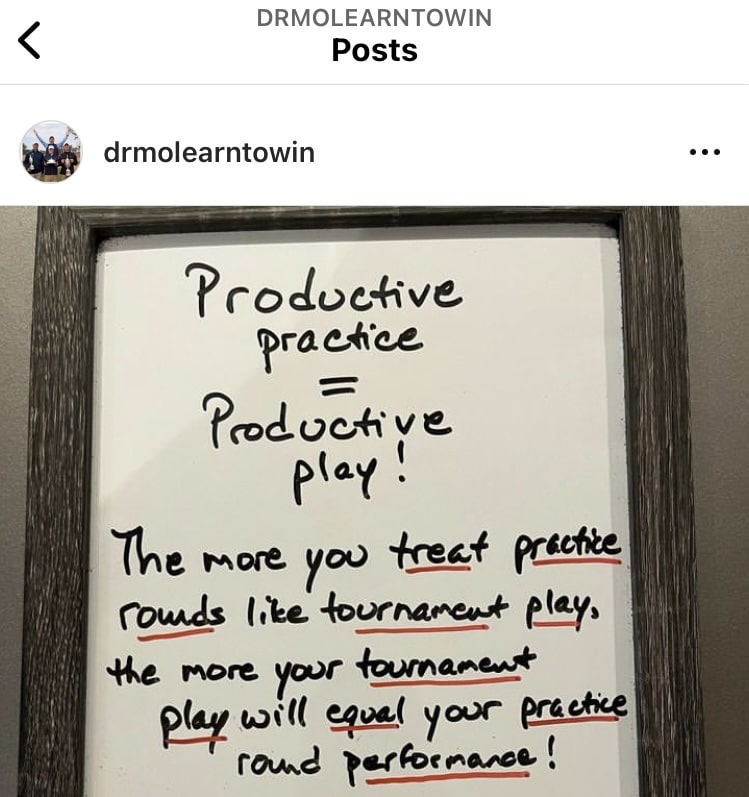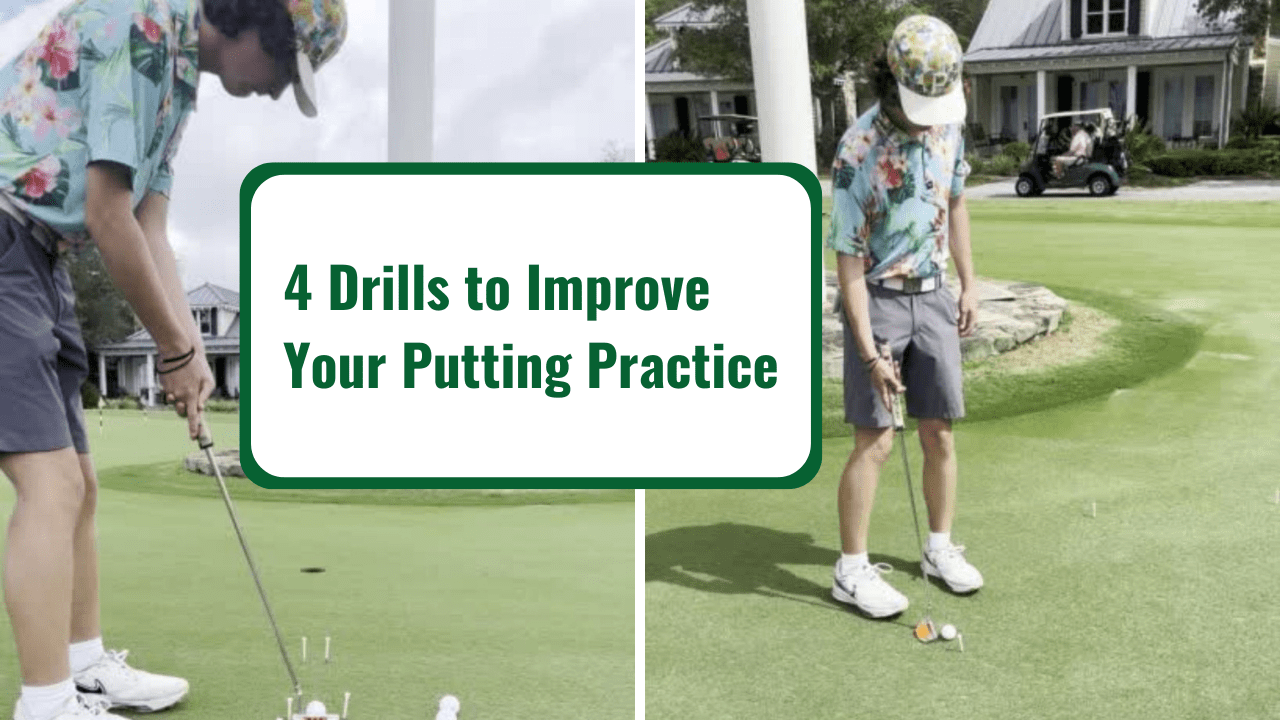How to Play Golf to Improve

So many of you want to know, what do I do to improve how I play? The satisfaction you feel when you improve is what you are searching for, and it is rewarding. While many golfers will work on improving their technique or practicing their putting, I specialize in using sports psychology (i.e. better thinking) to improve your game.
This is not because working on your technique or putting isn’t essential; this is because the way you think significantly impacts how you play. If you have worked on your swing fundamentals, putting, or anything else, but your cognitive thinking is disabling or blocking you, then no matter what you do, you can not perform at your best. So if you are going to consistently improve, you must incorporate mental practice. The pros I work with, like Zach Johnson, Davis Thompson, and Keegan Bradley, realize this, and I hope you will too.
The benefit of working on your mental game is that while many of you will not be able to hit it like Rory McIlroy (but then again, who can?), you can think like the best players in the world. Your thinking can improve your golf, which is why mental practice is rewarding for everyone.
How Should You Practice Golf to Improve?
Many of my Instagram followers liked my #mondayswithmo board, where I link productive practice with productive play. I say, ‘The more you treat practice rounds like tournament play, the more tournament play will equal your practice round performance.’ How well you practice, to a large extent, dictates how strong of a player you will become, so let’s practice the right way.
The Three Cornerstones of Your Game
I teach people how to improve their golf by working on three essential areas. These three areas make up their foundation, but precisely how to work on these areas will be unique to everyone. How Keegan Bradley improves his game to play better will likely differ from how you do it, but you will find your unique roadmap by working through these three key elements.
Working through the three pillars of on-course thinking, preparation and practice, and the off-course variables will produce better results because you are working through all the “pieces of the puzzle” that improve your score.
The first cornerstone that I work with is your on-course thinking. This is essentially your thinking process during the competition (even if that’s just friendly competition). If you practice your pre-shot routines, commitment, composure, and self-talk productively, you can make the improvements you desire. Through exercises, you can learn how to systematically refine your on-course thinking to be aware of the correlation between your mental choices and how you score.
This knowledge informs experienced players like Tiger Woods how to choose their gait. Other great players are conscious of how on-course thinking works for them through their experience in practice rounds too. If you play back recordings of Stewart Cink in The British Open from 2009, he appears to be talking to himself before every putt.
He is!
This is the same self-talk he uses in his practice rounds, and by doing this, he “defaults” to using this self-talk in the tournament to keep his emotions in check. He can be seen implementing his roadmap to better scores at The British Open, where he takes home the trophy for the Champion Golfer of the Year. It pays to practice your on-course thinking so you can actually improve how you score during competition.
What “pitfalls” do I need to be aware of as I try to improve how I play golf?
This is where I highlight the biggest mistake. When most of you only focus on preparation and practice, you ignore the other two vital cornerstones of on-course thinking and what’s happening off-course. To help you to learn to score better, I’m looking at the whole puzzle. When golfers focus on hitting thousands of putts, for example, they only focus on one corner piece of the puzzle. Unsurprisingly, they become frustrated because if you hyper-focus on only one area of the 3-pronged foundation, your improvement will be limited.
You improve how you play golf by working on all three cornerstones. When I help you assess your putting process to maximize your game, I am looking at your putting from the perspective of being a complete golfer, which means that your putting practice must be intentional and efficient. Your putting training may use exercises for players that are ball-conscious, like on my Instagram Reel, or putting drills that work through mechanics, speed games, and pressure.
What indirectly affects how I play golf?
If you want to improve your golf, the third critical component of the puzzle is what happens for you off-course. Your road map to better scores must address the things that indirectly affect you that might influence your score. If I’m coaching college players, it might be their school work; if you’re a parent, it might be your sleep (or lack thereof!). This is another essential pillar where you look at the variables unique to you, acknowledge the correlation with better scores, and systematically devise how to manage a positive correlation directly.
To improve how you play, you can’t just practice. You can’t just play more. You can’t just “simplify your life”. There is no “magic bullet” to better golf. You must work at improving ALL the components that affect your score. The Score Better Video Program is the best way to work through all three cornerstones, design your roadmap, and make the improvements you desire to shoot lower scores. And you CAN DO IT!




